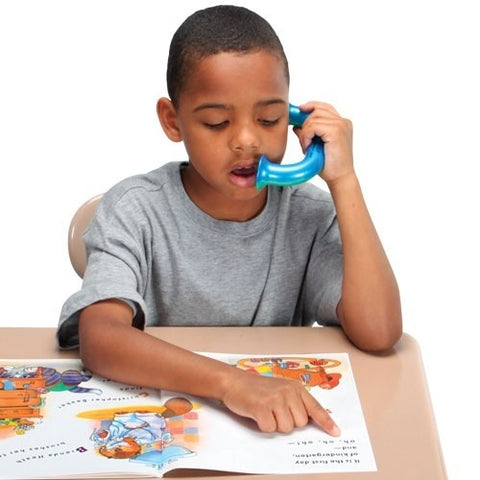How to Adapt Teaching Strategies for Students with Learning Disabilities
Posted on September 19 2019
How to Adapt Teaching Strategies for Students with Learning Disabilities
Create an inclusive classroom with these helpful tips and tools for learning disabilities.

Learning disabilities like dyslexia, APD (auditory processing disorder), autism, and stuttering are common in the classroom. Students struggling to read and learn deserve extra care and attention to help them thrive in and out of school. Altering traditional lesson plans and instructions to fit the needs of all your students is one way to help create an inclusive environment. This post details four ways to adapt your teaching strategies to help facilitate learning for everyone:
- Incorporate visuals
- Use educational tools
- Break down lesson plans
- Lend motivational support
Keep reading to learn more about these ways you can help students with learning disabilities.
Incorporate visuals
Using visuals can help support some students with learning disabilities by keeping them focused and engaged through graphics. Using a whiteboard or overhead projector to display images and videos are easy and effective ways to incorporate visuals. You can also use flashcards with pictures or have students with learning disabilities color-code their notes using a highlighter. All these uses of visual stimulation can help generate curiosity and excitement, especially for those who have difficulty listening or focusing on written words.
Use educational tools
Providing access to educational tools in the classroom can make a significant difference for students with learning disabilities. Reading helpers like the Toobaloo can turn a challenge with reading, comprehension, or speaking into a fun activity. Learn about all the ways the Toobaloo can help students with learning disabilities here.
Another reading tool that can benefit a variety of students who struggle with reading is the Eye Lighter. Designed to help students with dyslexia, the Eye Lighter highlights multiple lines of text or one sentence to aid the reader with eye-tracking. No more losing their place on the page! While using these fun tools can help keep the whole class engaged, they are particularly helpful for students with learning disabilities.
Break down lesson plans
Breaking your lesson down into smaller, more palatable bites can help students with learning disabilities. This simplification effort can be as straightforward as covering multi-layered concepts in a series of blocks, with periodic check-ins and progress markers along the way. Supplying older students with outlines for the lesson can also come in handy when seeking help from a tutor, aide, or teacher’s assistant. You can also provide examples of completed course work at the start of each lesson so that students with learning disabilities understand the expectations. The same goes for a reading assignment: provide students with guided questions or prompts about the upcoming text so they can prepare for the reading. Breaking down lessons helps give guidance and support to students with learning disabilities so that learning is more fun.
Lend motivational support

All students expect – and need – praise as they tackle new learning challenges. However, encouragement can be especially important for students struggling with learning disabilities. To combat poor engagement, frequently lend motivational support – both verbally and nonverbally. Research shows that positive utterances can help increase a student’s expectation for success and encourage them to place more value on a particular task. Deliver encouragement thoughtfully and focus on the work or the process, not the student. Honing on the task performance can help students understand which learning strategies produce the desired results so that they can repeat the process in the future. Doling out figurative pats on the back can also motivate students with learning disabilities to keep striving to learn and meet their goals.
These tips are just some of the ways to adapt your teaching strategies for students with learning disabilities. They can be useful for any student in the classroom, but they work especially well for students struggling with dyslexia and other learning disabilities.
To shop the Toobaloo and other learning tools for kids, visit our online store today or call 877.819.2541. For more insights explicitly designed for teachers like you, check out the rest of our blog.
Related Content
Dyslexia and Speech-Related Learning Disorders Statistics
Teacher Tell-All About Our Educational Speech & Reading Tools


0 comments